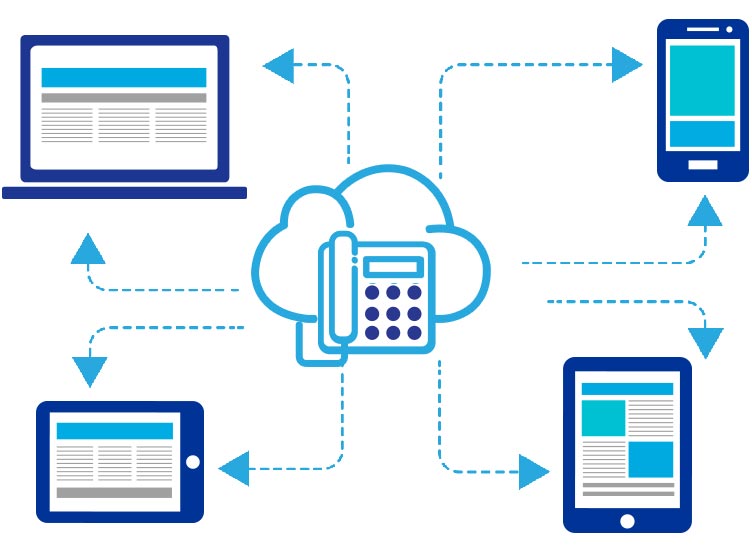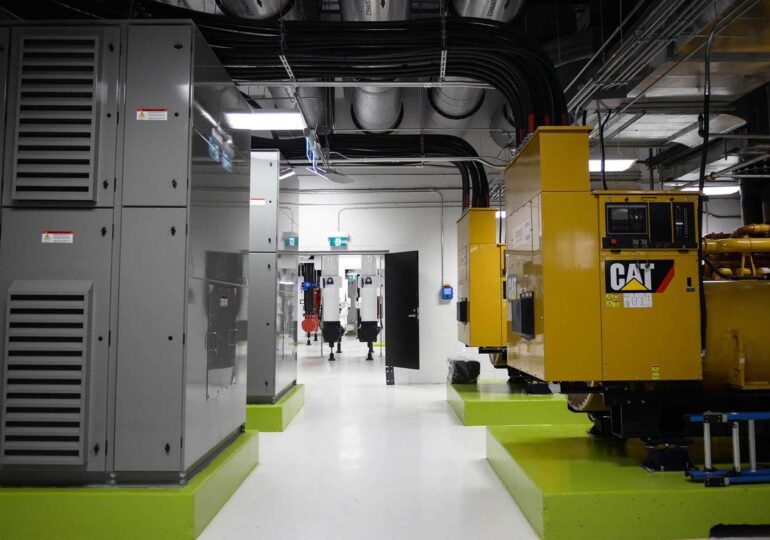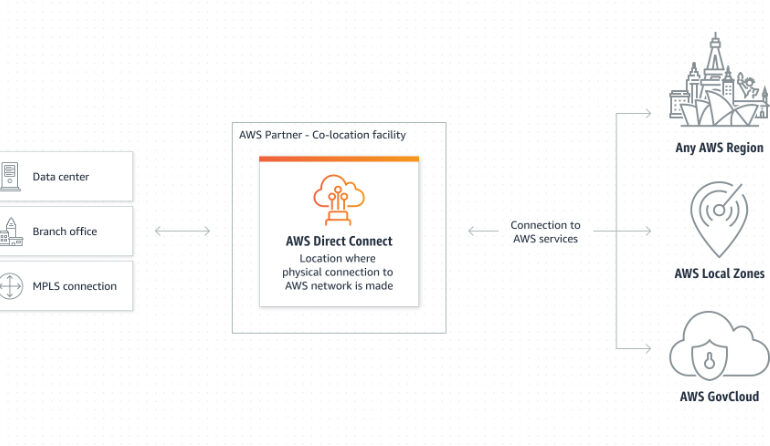What are the differences between VoIP and traditional telephony services

In today’s digital age, communication has taken on a new form with the advent of Voice over Internet Protocol (VoIP) technology. But what exactly is the difference between VoIP and traditional telephony services? In this article, we delve into the fundamental variances that set these communication methods apart.
- How traditional telephony services work
- Key differences between VoIP and traditional telephony services
- Cost Comparison: VoIP vs. traditional telephony services
- Call quality comparison: VoIP vs. traditional telephony services
- Features and flexibility: VoIP vs. traditional telephony services
- Scalability and mobility: VoIP vs. traditional telephony services
- VoIP and traditional telephony services for businesses
How VoIP works
VoIP, or Voice over Internet Protocol, is a technology that enables voice communication over the Internet. Instead of using traditional copper wires, VoIP calls are made using an internet connection. This innovative technology converts analogue voice signals into digital packets, which are then transmitted over the internet to reach the recipient.
VoIP operates by breaking down voice signals into small data packets and sending them over the internet. These packets are then reassembled at the receiving end to recreate the voice signal. This process allows for real-time communication, making VoIP an ideal choice for businesses and individuals looking for efficient and cost-effective communication solutions.
Unlike traditional telephony services, which rely on dedicated copper wiring, VoIP calls can be made using any device that has an internet connection. This flexibility allows users to make calls from their computers, smartphones, or even specialized VoIP phones. Additionally, VoIP offers a wide range of features, including voicemail, call forwarding, and video conferencing, making it a versatile and convenient communication solution.
How traditional telephony services work
Traditional telephony services, also known as Public Switched Telephone Network (PSTN) services, have been the standard for voice communication for decades. These services rely on dedicated copper wires to transmit voice signals. When a call is made, the voice signal is converted into electrical signals and transmitted through the copper wires to reach the recipient.
Traditional telephony services operate through a network of telephone exchanges, which route calls to their intended destinations. These exchanges are connected by physical phone lines, which can be limited in capacity and susceptible to damage or disruption. This limitation can result in dropped calls or poor call quality, especially for long-distance or international calls.
Unlike VoIP, traditional telephony services do not offer the same level of flexibility and features. While basic features such as call waiting and caller ID are available, additional features such as voicemail and call forwarding may require additional equipment or services. This lack of flexibility can be a drawback for businesses and individuals looking for a more versatile communication solution.
Key differences between VoIP and traditional telephony services
The key differences between VoIP and traditional telephony services lie in the underlying technology and the way calls are transmitted. Let’s explore these differences in more detail.
- Infrastructure: Traditional telephony services rely on dedicated copper wiring, which can be expensive to install and maintain. VoIP, on the other hand, uses the existing internet infrastructure, making it more cost-effective and accessible.
- Cost: Traditional telephony services can be expensive, especially for long-distance or international calls. VoIP, on the other hand, enables cheap or even free long-distance calling, making it a more cost-efficient option.
- Call quality: While traditional telephony services have been reliable for decades, the call quality can be affected by factors such as line quality and distance. VoIP, on the other hand, can provide high-quality voice communication, especially with a stable internet connection.
- Features: VoIP offers a wide range of features, such as voicemail, call forwarding, and video conferencing, which may require additional equipment or services with traditional telephony services.
- Flexibility: VoIP allows users to make calls from any device with an internet connection, making it a more flexible option. Traditional telephony services, on the other hand, require physical phone lines and may be limited to specific devices.
Cost Comparison: VoIP vs. traditional telephony services
One of the key advantages of VoIP is its cost efficiency. Traditional telephony services can be expensive, especially for long-distance or international calls. With VoIP, however, these charges are significantly reduced or eliminated altogether.
VoIP calls are transmitted over the internet, bypassing the need for dedicated phone lines. This eliminates the costs associated with maintaining and upgrading physical infrastructure. Additionally, VoIP providers often offer competitive pricing plans, further reducing the cost of communication.
In contrast, traditional telephony services require physical phone lines, which can be expensive to install and maintain. Long-distance or international calls can incur additional charges, making traditional telephony services less cost-effective for businesses and individuals with high communication needs.
It’s important to consider the specific communication requirements of your business or personal use when comparing the costs of VoIP and traditional telephony services. While VoIP may offer significant cost savings, it’s important to ensure that the quality and reliability of the service meet your needs.
Call quality comparison: VoIP vs traditional telephony services
Call quality is a crucial factor when considering the differences between VoIP and traditional telephony services. While traditional telephony services have been reliable for decades, VoIP has made significant advancements in call quality, especially with a stable internet connection.
Traditional telephony services rely on dedicated copper wires to transmit voice signals. The quality of the call can be affected by factors such as line quality and distance, leading to dropped calls or poor audio quality, especially for long-distance or international calls.
With VoIP, voice signals are converted into digital packets and transmitted over the internet. This process allows for real-time communication and can provide high-quality voice calls, especially with a stable and reliable internet connection. However, it’s important to note that the call quality of VoIP can be affected by factors such as internet speed, network congestion, and the quality of the devices used.
To ensure optimal call quality with VoIP, it’s important to have a stable and reliable internet connection. High-speed broadband or fiber internet connections are recommended for the best voice quality. Additionally, using quality VoIP hardware or software can further enhance the call quality.
Features and flexibility: VoIP vs traditional telephony services
VoIP offers a wide range of features that can enhance communication and productivity. These features are often included in the service package or available at a minimal additional cost. Traditional telephony services, on the other hand, may require additional equipment or services to access similar features.
VoIP features such as voicemail, call forwarding, and video conferencing are often included in the service package. This means that users can access these features without the need for additional hardware or services. Additionally, VoIP allows for easy integration with other communication tools and platforms, such as email and customer relationship management (CRM) systems.
Traditional telephony services may offer basic features such as call waiting and caller ID. However, additional features such as voicemail or call forwarding may require additional equipment or services. This can add to the overall cost and complexity of the telephony system.
Flexibility is another key advantage of VoIP. Users can make and receive calls from any device with an internet connection, such as computers, smartphones, or specialized VoIP phones. This allows for greater mobility and convenience, especially for businesses with remote or mobile workers.
Traditional telephony services, on the other hand, are often limited to specific devices connected to physical phone lines. This can be restrictive for businesses or individuals who require flexibility in their communication systems.
Scalability and mobility: VoIP vs traditional telephony services
Scalability is an important consideration for businesses that anticipate growth or have fluctuating communication needs. VoIP offers greater scalability compared to traditional telephony services.
With VoIP, adding or removing phone lines is a simple process that can be done virtually. This makes it easy to scale up or down as needed, without the need for additional physical infrastructure. Businesses can easily add new extensions or phone lines to accommodate new employees or departments, or remove them when they are no longer needed.
Traditional telephony services, on the other hand, require physical phone lines and additional infrastructure to add or remove phone lines. This can be time-consuming and costly, especially for businesses with dynamic communication needs.
Mobility is another advantage of VoIP. With VoIP, users can make and receive calls from any location with an internet connection. This is especially beneficial for businesses with remote or mobile workers who need to stay connected while on the go.
Traditional telephony services, on the other hand, are tied to physical phone lines and specific locations. Moving or relocating can be a complex process that requires transferring phone lines and updating physical infrastructure.
VoIP and traditional telephony services for businesses
When it comes to choosing the right telephony service for your business, it’s important to consider your specific communication needs and goals. Both VoIP and traditional telephony services have their advantages and disadvantages, and the best choice depends on factors such as cost, call quality, features, flexibility, scalability, and mobility.
For businesses looking for cost-effective communication solutions, VoIP offers significant cost savings, especially for long-distance or international calls. Additionally, VoIP provides a wide range of features that can enhance productivity and collaboration, such as voicemail, call forwarding, and video conferencing.
Call quality is a crucial factor for businesses that rely heavily on voice communication. While traditional telephony services have proven reliability, VoIP has made significant advancements in call quality, especially with a stable internet connection. It’s important to ensure that your internet connection meets the requirements for high-quality VoIP calls.
Flexibility and scalability are important considerations for businesses that anticipate growth or have dynamic communication needs. VoIP offers greater flexibility and scalability compared to traditional telephony services, allowing for easy addition or removal of phone lines and mobility for remote or mobile workers.
Ultimately, the choice between VoIP and traditional telephony services depends on your specific business requirements and goals. It’s recommended to consult with a telecommunications expert to assess your needs and determine the most suitable telephony solution for your business.
Conclusion: Choosing the right telephony service for your needs
In conclusion, the differences between VoIP and traditional telephony services lie in the underlying technology, cost, call quality, features, flexibility, scalability, and mobility. VoIP offers a cost-effective and feature-rich communication solution that leverages the existing internet infrastructure. Traditional telephony services, on the other hand, rely on dedicated copper wires and may have limitations in terms of cost, features, flexibility, and scalability.
When choosing the right telephony service for your needs, it’s important to consider factors such as cost, call quality, features, flexibility, scalability, and mobility. Assess your specific communication requirements and goals to determine which telephony solution best meets your needs.
It’s recommended to consult with a telecommunications expert who can assess your needs and provide guidance on the most suitable telephony solution for your business or personal use. With the right telephony service, you can enhance communication, improve productivity, and stay connected in today’s digital age.








































